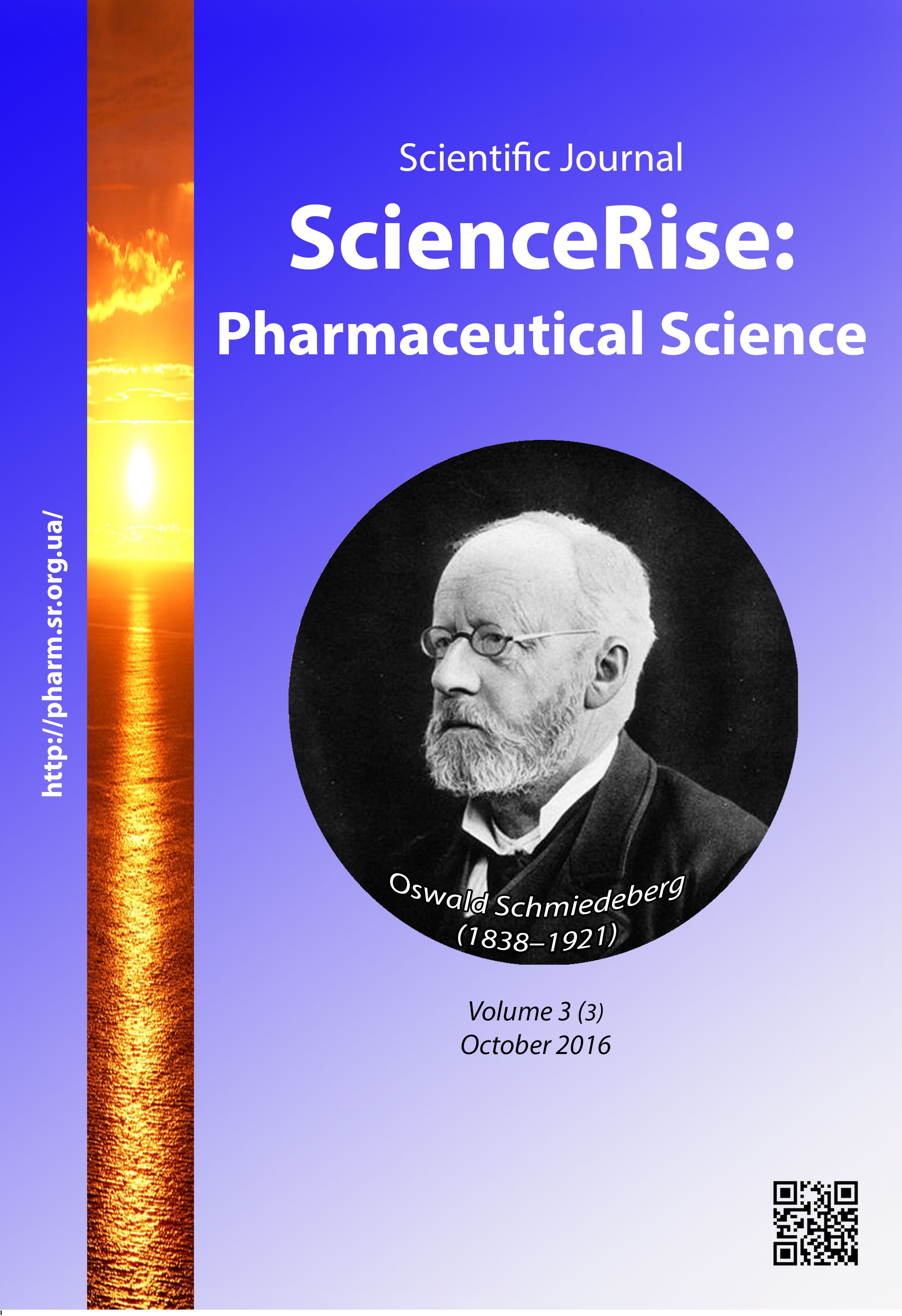The study of the volatile fraction components from the plant material of «Lollo Rosso» lettuce species
DOI:
https://doi.org/10.15587/2519-4852.2016.81307Keywords:
lettuce, Asteraceae, volatile fraction, identification, qualitative determination, gas chromatographyAbstract
Herbs are important source of biologically active compounds having different types of pharmacological activity. The attention is drawn both to herbs, traditionally used for prevention and treatment of different disorders, and to edible plants included in the every person’s daily diet. Lettuce, grown worldwide as leafy vegetables, is among them.
Aim. The aim of our work was quantitative and qualitative determination of the volatile fractions components, obtained from leaves, roots and seeds of «Lollo rosso» lettuce species.
Methods. Gas chromatography was used for quantitative and qualitative determination of the volatile fractions components of «Lollo rosso» lettuce species.
Results. In result of research, in the volatile fraction of lettuce 31 compounds were identified and determined in leaves, 27 compounds were determined in roots, and 24 compounds were determined in seeds. Squalene was dominating substance in all types of the herbal material.
Conclusion. Obtained results can be used for development of the Quality control methods for lettuce herbal material
References
- Heinrich, M. et. al. (2012). Fundamentals of pharmacognosy and phytotherapy. Elsevier Health Sciences, 336.
- Tisserland, R., Young, R. (2014). Essential oil safety: A guide for Health Care Professionals. Elsevier Health Sciences, 784. doi: 10.1016/c2009-0-52351-3
- Reichling, J., Schnitzler, P., Suschke, U., Saller, R. (2009). Essential Oils of Aromatic Plants with Antibacterial, Antifungal, Antiviral, and Cytotoxic Properties – an Overview. Forschende Komplementärmedizin / Research in Complementary Medicine, 16 (2), 79–90. doi: 10.1159/000207196
- Bakkali, F., Averbeck, S., Averbeck, D., Idaomar, M. (2008). Biological effects of essential oils – A review. Food and Chemical Toxicology, 46 (2), 446–475. doi: 10.1016/j.fct.2007.09.106
- Bayala, B., Bassole, I. H. N., Scifo, R. et. al. (2014). Anticancer activity of essential oils and their chemical components – a review. Am J Cancer Res., 4 (6), 591–607.
- Nomaani, R. S. S. A., Hossain, M. A., Weli, A. M., Al-Riyami, Q., Al-Sabahi, J. N. (2013). Chemical composition of essential oils and in vitro antioxidant activity of fresh and dry leaves crude extracts of medicinal plant of Lactuca Sativa L. native to Sultanate of Oman. Asian Pacific Journal of Tropical Biomedicine, 3 (5), 353–357. doi: 10.1016/s2221-1691(13)60076-3
- Baenas, N., García-Viguera, C., Moreno, D. (2014). Elicitation: A Tool for Enriching the Bioactive Composition of Foods. Molecules, 19 (9), 13541–13563. doi: 10.3390/molecules190913541
- Llorach, R., Martínez-Sánchez, A., Tomás-Barberán, F. A., Gil, M. I., Ferreres, F. (2008). Characterisation of polyphenols and antioxidant properties of five lettuce varieties and escarole. Food Chemistry, 108 (3), 1028–1038. doi: 10.1016/j.foodchem.2007.11.032
- Altunkaya, A., Becker, E. M., Gökmen, V., Skibsted, L. H. (2009). Antioxidant activity of lettuce extract (Lactuca sativa) and synergism with added phenolic antioxidants. Food Chemistry, 115 (1), 163–168. doi: 10.1016/j.foodchem.2008.11.082
- Lonchamp, J., Barry-Ryan, C., Devereux, M. (2009). Identification of volatile quality markers of ready-to-use lettuce and cabbage. Food Research International, 42 (8), 1077–1086. doi: 10.1016/j.foodres.2009.05.002
Downloads
Published
How to Cite
Issue
Section
License
Copyright (c) 2016 Вікторія Володимирівна Гуцол, Ірина Олександрівна Журавель, Ірина Геннадіївна Гур’єва

This work is licensed under a Creative Commons Attribution 4.0 International License.
Our journal abides by the Creative Commons CC BY copyright rights and permissions for open access journals.








